Micro-Trains Line 60-Foot Excess Height Boxcar
Published: 2024-08-01 - By: CNW400
Last updated on: 2024-08-01
Last updated on: 2024-08-01
visibility: Public - Headline
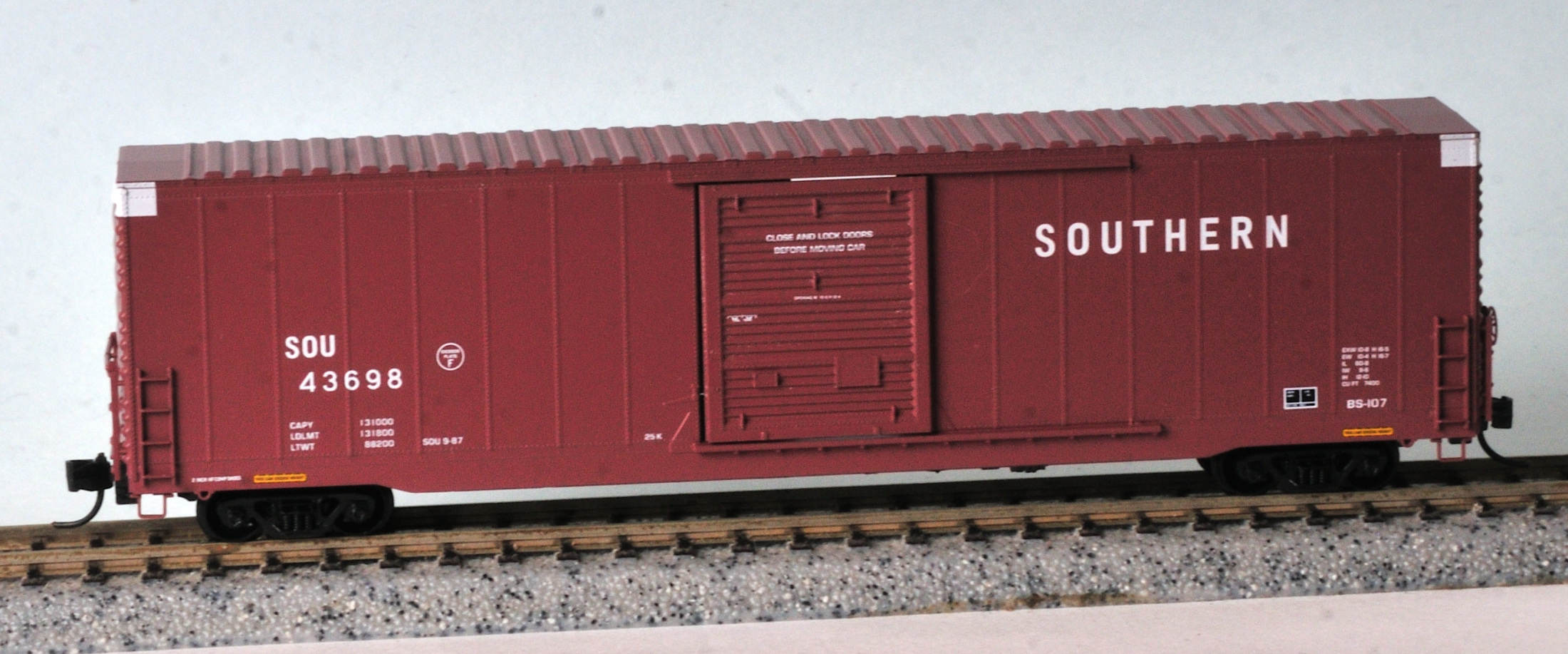
Prototype History
Some of the earliest specialized boxcars were designed for the home appliance and automobile parts industries in the 1960’s. The 60-foot and 86-foot auto parts cars were introduced to carry light, bulky products that tend to "cube out before weighing out" and could be stacked vertically, such as fenders, and body panels. The 86-foot boxcars had a 70-ton capacity, larger interiors and excess height clearance - because of their extra height they became the first boxcars, starting in 1964, to be delivered without running boards. Running boards were not mandatory on new equipment built after 1966 with a target date of 1974 to have running boards removed from all rolling stock. The deadline was extended to 1983 to allow removal during normal maintenance cycles. The 60-foot boxcars often had a cushioned underframe and either a 70- or 100-ton load capacity. The cars hauled the heavier items: engines, transmissions and axles. Auto parts cars were the initial pieces of rail equipment to be coined the term ‘high cube’.The 40-foot high cube boxcar began to appear in the mid-60’s with its greater cubic foot capacity to ship commodities and boxes that are again bulky, yet don’t weigh a lot. The taller interiors allowed vertically stacking and became popular with the home appliances industry shipping washer/dryers, stoves, and dishwashers.
Larger and longer high cube boxcars became more common in the early 1970’s. The 60-foot high cube boxcar is comparable to a standard 40-foot car but with an additional two feet of interior height. They are assigned a Plate F designation, with a maximum height of 17'0". However, the actual height can range from 15'10" to 17'0". The 60-foot high cube car has a 100-ton load capacity and are typically equipped with plug doors and cushioned underframes to minimize damage to cargo. These cars are equipped with floor anchors and restraints and primarily haul rolls of paper, lumber, plywood, particleboard and other sheet material. Plate F boxcars maximize car capacity by loading and stacking of cargo in multiple vertical and/or horizontal rows – allowing excess height boxcars to be 30%* more productive than common Plate C boxcars. The utilization of space on Plate F boxcars creates greater cubic capacity and tonnage per railcar and produces ‘smaller’ trains as more freight can be pulled by fewer boxcars. (*source: The Greenbrier Companies).
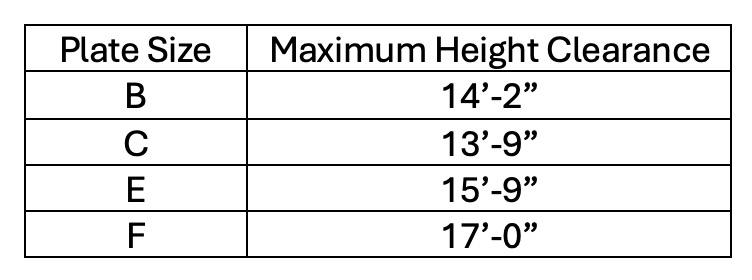
The Micro-Trains model is categorized as a Merchandise Boxcar equipped to carry appliances, panel products, and newsprint with the ‘107’ designation stenciled on the far-right lower corner side panel.
Boxcar Commodity Codes
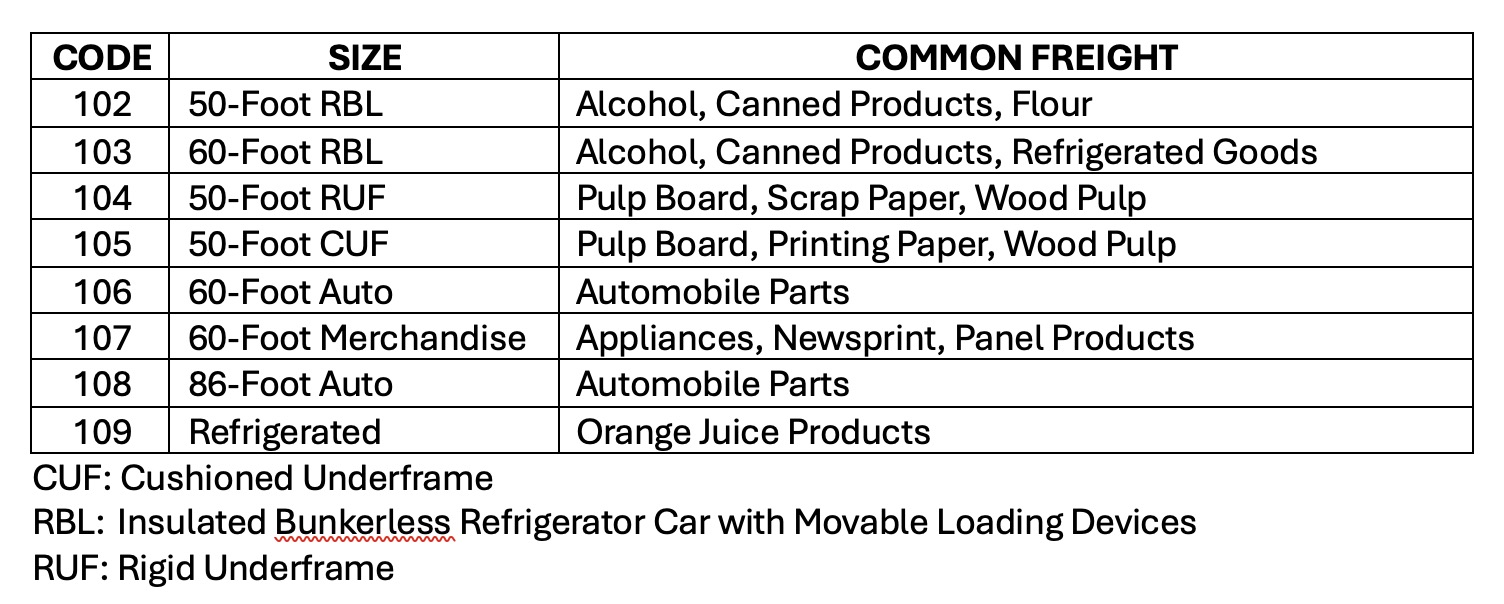
High cube or excess height boxcars are commonly painted with a white band along the top of both end panels – making the car more visible to rail crews and assuring the boxcar has not been assigned to a height restricted route. Low clearance lines are more common in the eastern part of the United States with older tunnels, bridges, and underpasses not being able to allow passage of modern excess height rolling stock.
Pricing & Road Names
Micro-Trains Line first introduced the 60-Foot Excess Height Boxcar in 1998 with a suggested retail price at that time of $14.30. Since then, Micro-Trains has released twenty-two unique regular production models of the Excess Height Boxcar which include the following road names:- Alaska Railroad
- Burlington Northern Santa Fe
- Conrail
- Grand Trunk Western
- Montana Rail Link
- Norfolk Southern
- Norfolk & Western
- Penn Central
- Southern Railway
- Union Pacific
- Undecorated
The Model
The ready-to-run 7400 cubic-foot boxcar is packaged in an oversized clear jewel case with a slip-off cover and a one-piece plastic cradle to cushion the model. A thick plastic insert protects the surface from any scuffmarks. The model information is labeled on the end of the case and a brief description of the prototype is found on the bottom panel. No additional pieces were found inside the case.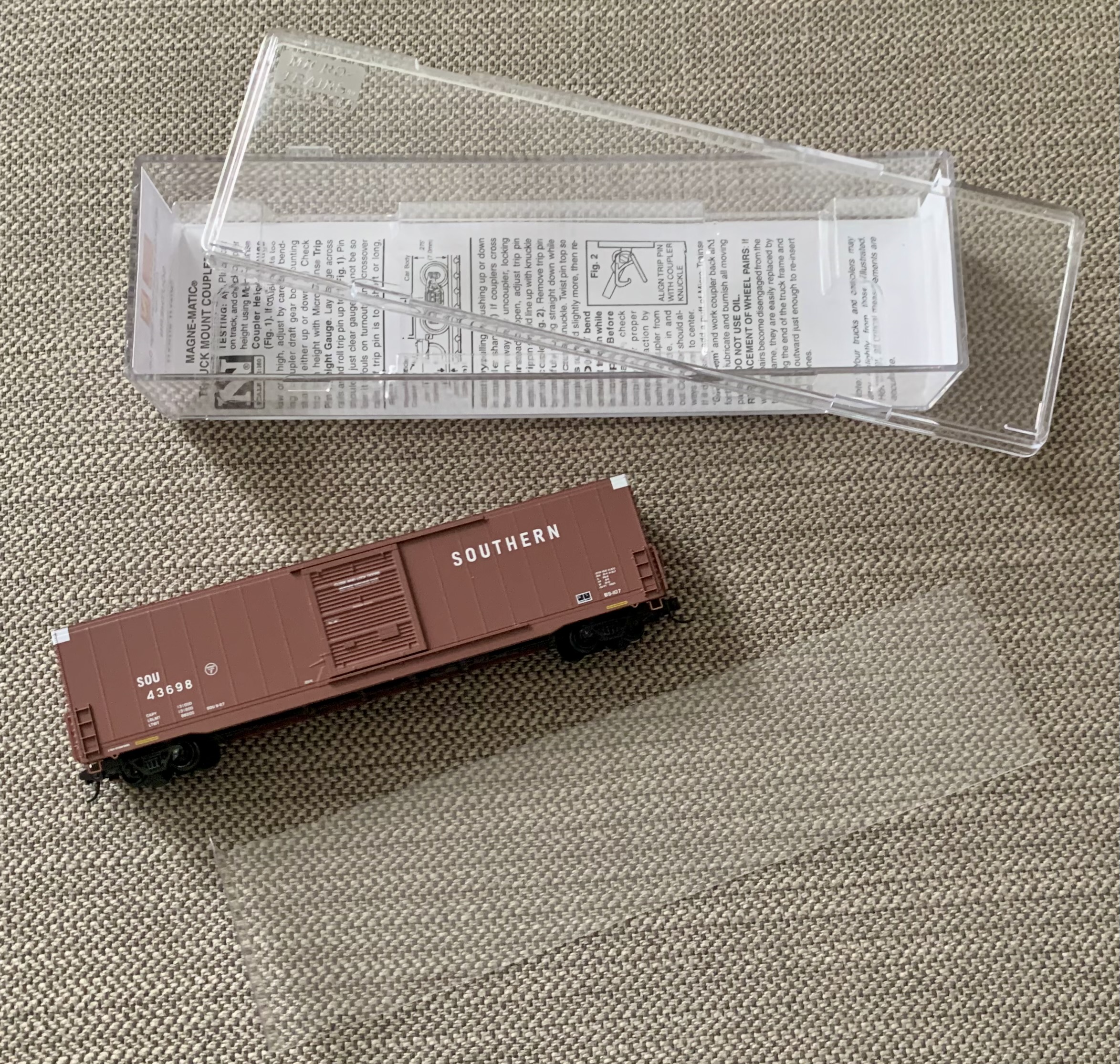
The 60-foot, single-door car was serviced and repainted in 1987 with the Robert Claytor Boxcar Red Southern color scheme with white lettering. The paint is clean and even along the entire injection molded plastic model – all characters are neat and legible. The placement of characters and fonts used are exact when compared to photographs of Southern Railway excess height boxcars of that era. Note the yellow “This Car Excess Height” warning signs on the side sills.

The sides of the Micro-Trains model feature the prototypical correct eight full panel configuration on each side of the 10-foot-wide door. The model panels have well defined, sharp rivet lines and door appliance detail. The operating 10-foot Youngstown sliding door has the proper four section corrugation 3 x 5 x 5 x 5 pattern with low mounted route and placard boards. Once opened, the interior of the boxcar displays a black panel floor which is ‘nailable’ in real life applications. With the elimination of running boards and the need to reach roof top, the model sports molded prototype correct four-rung short ladders – along with the proper angled side sill that allows access to the trucks.

While inspecting the car ends, I found a discrepancy between the Micro-Trains Line model and the ‘true-life’ Southern #43698 boxcar. The Micro-Trains model features an Improved Dreadnaught 3/3/3 excess height car end with a thin ribbed top panel. Photograph images of the real Southern boxcar reveal a welded 11 corrugation non-terminating car end pattern.
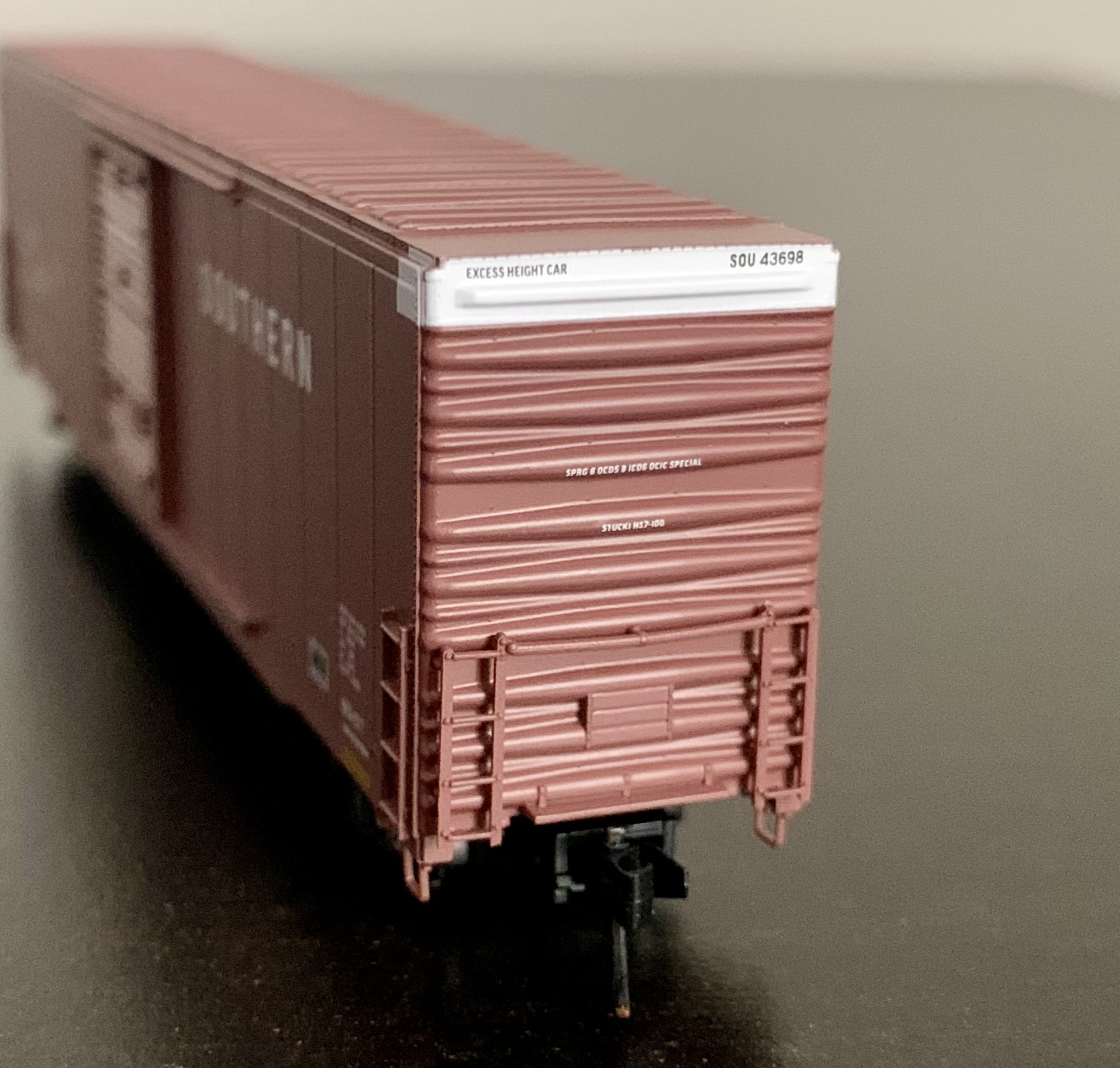
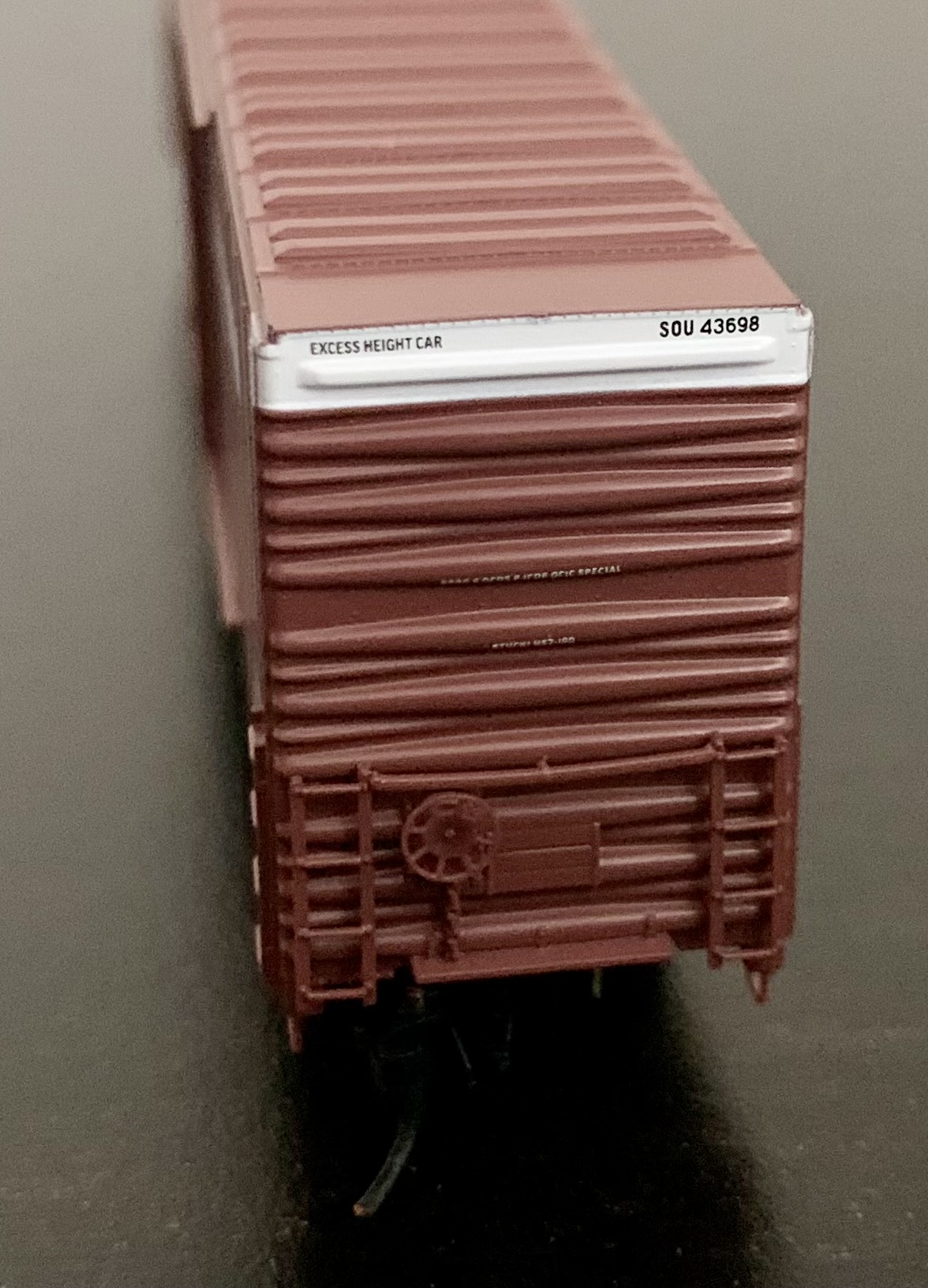
The Micro-Trains Line model shows the proper thick white brand atop the car end that wraps around to the abutting side panel with the ‘Excess Height Car’ warning and road markers. Again, both ends feature the correct four-rung short ladders, crossover platforms, and low mount placard boards.
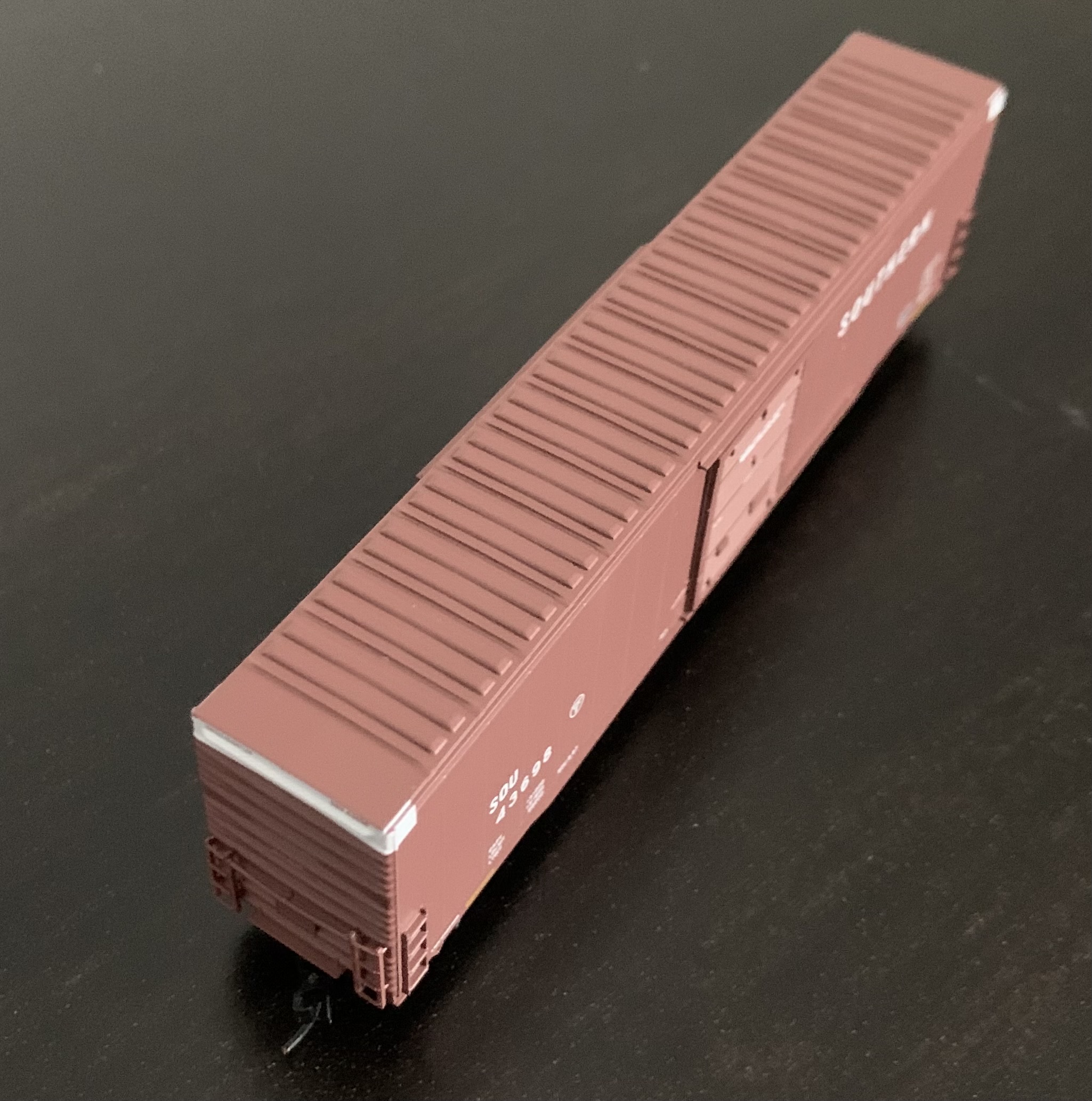
The top of the boxcar is equipped with a 16-panel flat metal roof. The black underframe features separately applied brake reservoir, cylinder, and valve. The boxcar rides along body mounted long extended Micro-Trains Line couplers with Barber Roller Bearing trucks and black plastic wheels.
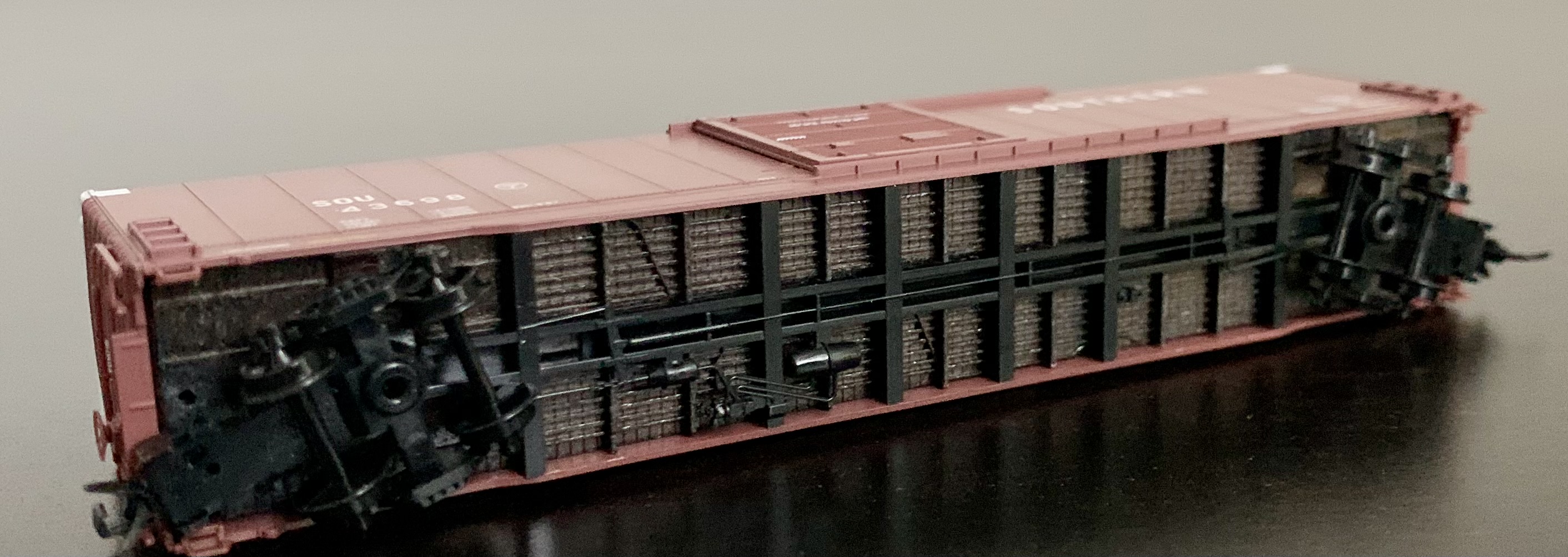
The car measured 4 3/4 inches in length and weighed 1.30 ounces, which is perfect according to the National Model Railroad Association (NMRA) recommendations of 1.20 -1.30 for a car of this length. I found it an excellent runner while testing on Kato Unitrack with no issues around curves or through turnouts at slow and medium speeds.
Conclusions
This model is another excellent addition into the Micro-Trains Line collection. A well-built, high-quality model boxcar with mostly prototypical correct details. Perfect running weight, operating sliding doors and of course, an industry favorite Micro-Trains Line Magne-Matic Coupler System. The most discerning collector may find fault with some molded detail parts and the incorrect car end design according to photographic images. But Micro-Trains filled my ‘plate’ enough to highly recommend their Plate F 60-Foot Excess Height Boxcar.To Explore the Entire Catalog of Micro-Trains Line Excess Height Boxcars: CLICK HERE

